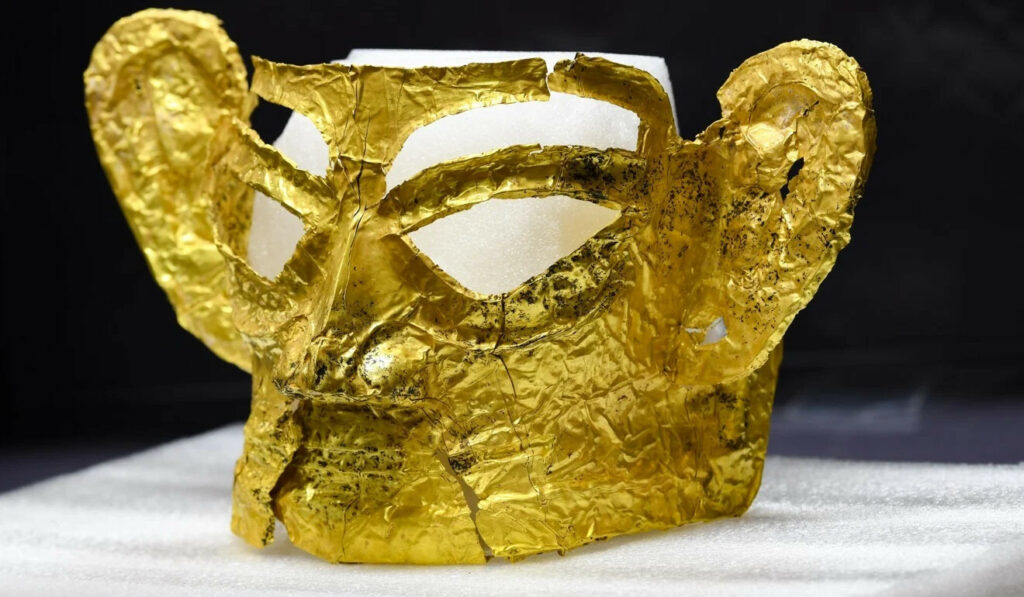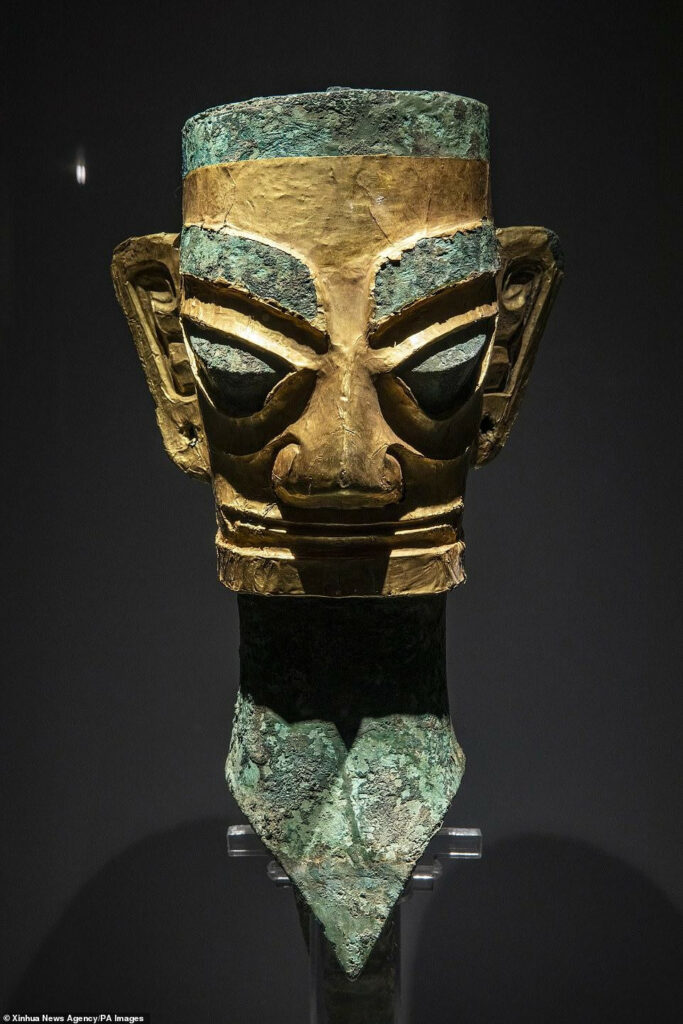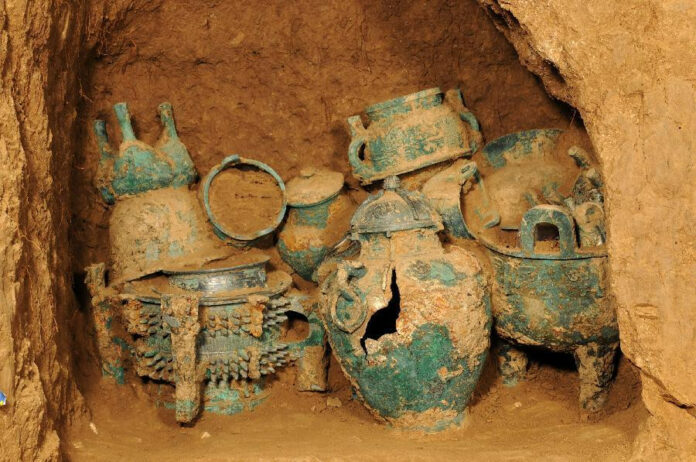Archaeologists have made remarkable discoveries at the Saixiandui archaeological site in Sichuan Province, southwest China. Since beginning excavations in 2019, researchers have unearthed over 500 artifacts, including gold ceremonial masks, bird-shaped ornaments, two types of silk, and a unique bronze statue called the “Big Mouth.”

Gold Masks Believed to Be Used in Ancient Sacrificial Rituals

Among the most striking finds are gold ceremonial masks estimated to be 3,000 years old. Experts believe these masks, found in rectangular sacrificial pits, were possibly worn by priests during ancient rituals. One partially intact mask, crafted from approximately 84 percent pure gold, originally weighed close to 500 grams (one pound). Another well-preserved mask, discovered in sacrificial pit “number three,” shares a similar design.
“Big Mouth” Bronze Statue and Other Precious Artifacts
In addition to the gold masks, archaeologists uncovered a rare, well-preserved, and exquisitely decorated bronze square statue known as “Big Mouth.” This two-foot-tall statue, adorned with animal and bird heads, represents a typical southern style of the late Shang Dynasty, which reigned during the second millennium BC and marked the Bronze Age in China.

Other precious artifacts found at the site include bird-shaped ornaments and objects crafted from bronze, jade, and ivory. The discovery of two types of silk, one in the ashes of a sacrificial pit and another wrapped around bronze ware, sheds light on the metaphysical significance of silk in ancient sacrificial practices.
Saixiandui: A Window into Ancient Chinese Civilization
The Saixiandui site, first discovered in 1929, has yielded numerous insights into an ancient Chinese civilization. In 1986, a significant excavation revealed two ceremonial pits containing over 1,000 artifacts, including a bronze sculpture of a human head with a well-preserved gold mask, now housed at the Saixiandui Museum.

As excavations continue, archaeologists are employing remote observation techniques to examine the sacrificial pits, believed to have been used by an unidentified civilization. These ongoing discoveries at Saixiandui are expected to deepen our understanding of the cultural connections between the Chengdu Plain and its surrounding areas, offering a fascinating window into ancient Chinese history and culture.

Unraveling the Mysteries of the Saixiandui Civilization
The recent discoveries at the Saixiandui Ruins have sparked renewed interest in the enigmatic civilization that once thrived in the region. Archaeologists and historians are working to piece together the clues left behind by this ancient society, seeking to understand their beliefs, customs, and way of life.

The Significance of Sacrificial Pits
The six rectangular pits discovered at the site are believed to have served a sacrificial purpose. The objects found within them, including the gold masks and bronze statue, were likely ritually burned before being buried. This practice suggests a complex system of religious beliefs and ceremonies that were central to the Saixiandui civilization.
Connecting the Chengdu Plain to the Wider World
As more artifacts are unearthed at Saixiandui, experts are beginning to form a clearer picture of the cultural connections between the Chengdu Plain and its surrounding areas. The styles and materials used in the creation of the gold masks, bronze statue, and other objects hint at a sophisticated network of trade and cultural exchange that extended far beyond the borders of the Saixiandui civilization.
The Future of Saixiandui Research
With excavations ongoing at the Saixiandui Ruins, archaeologists are hopeful that further discoveries will shed even more light on this fascinating ancient civilization. As new artifacts are uncovered and studied, researchers will continue to refine their understanding of the Saixiandui people, their beliefs, and their place in the wider context of ancient Chinese history.

The Saixiandui Ruins serve as a testament to the rich cultural heritage of China and the enduring legacy of its ancient civilizations. As research continues at this remarkable site, it is certain to yield new insights and revelations that will captivate archaeologists, historians, and the public alike for years to come.

